A top fitness coach shares his favorite 20-minute kettlebell workout for building full-body strength and muscle
This workout will 'improve core stability and replicate real-life movements, boosting overall functional fitness'
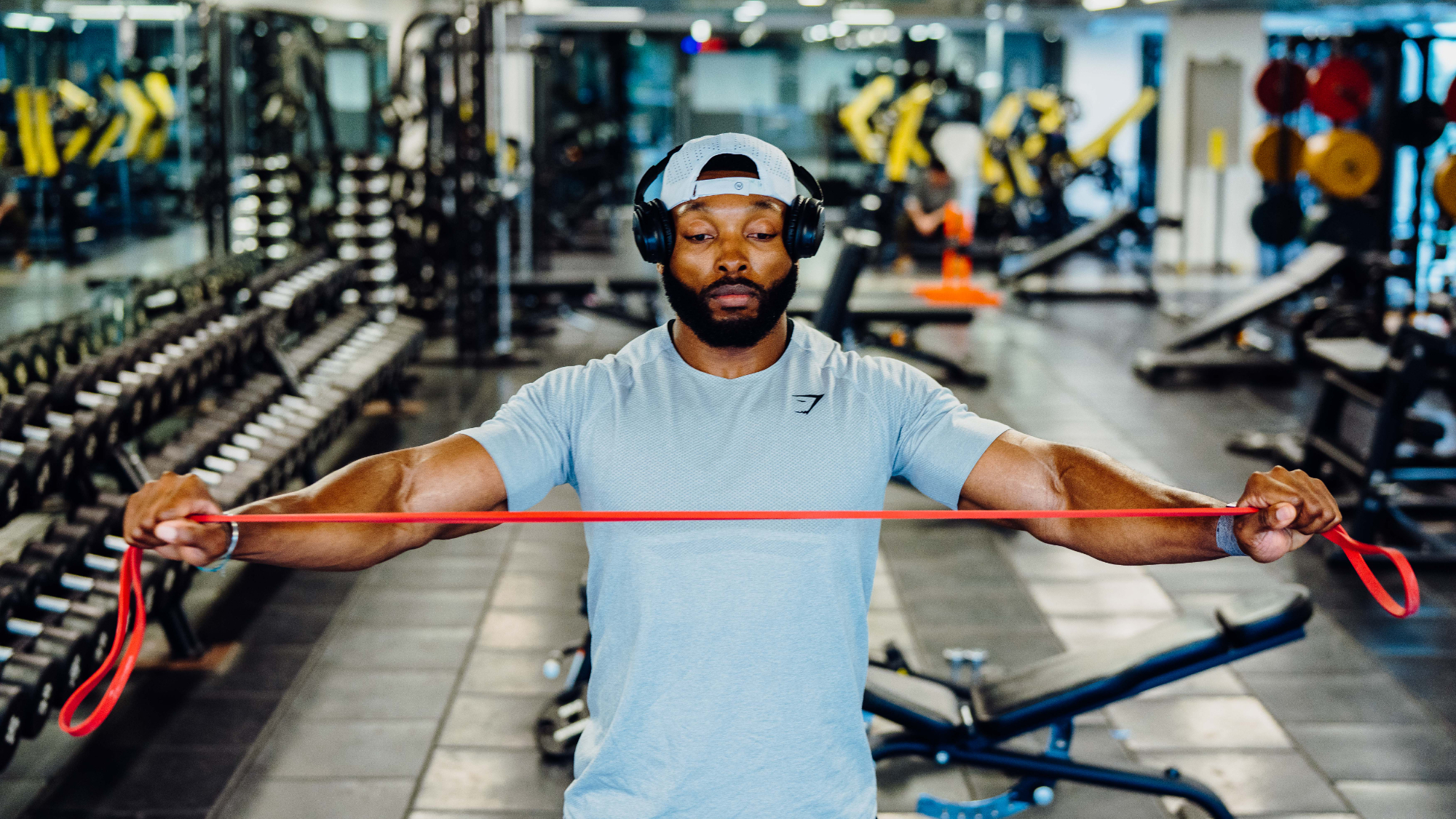
You don’t need to splash the cash on fancy gadgets to enjoy an effective workout. In fact, you don’t need much equipment at all.
This seven-move session from fitness coach and Pliability athlete Obi Vincent proves this point, working your whole body in just 20 minutes using nothing more than a couple of kettlebells. Set a timer on your smartwatch or phone and get to it.
“This is one of my favorite workouts because it’s highly efficient and versatile,” he says. “The exercises in this workout improve core stability and replicate real-life movements, boosting overall functional fitness.
"Kettlebell workouts can also be easily adapted for high-intensity interval training (HIIT), allowing for significant calorie burn and fitness gains in a short amount of time, making them ideal for a quick workout before or after work.”
How to do Obi Vincent’s kettlebell workout
- Goblet squat 2x8
- Single-arm overhead press 2x6 on each side
- Overhead reverse lunge 2x8 on each side
- Kettlebell swing 2x15
- Kettlebell single-arm row 2x6 on each side
- Kettlebell floor press 2x8 on each side
- Kettlebell biceps curl 2x10 on each side
Perform the exercises above as a circuit, and repeat this sequence for a total of two rounds.
Aim to maintain perfect form rather than rushing through reps, but still move purposefully, only leaving short breaks between exercises. This will ensure you spike your heart rate for heart health-boosting cardiovascular exercise, while still working your muscles effectively for strength benefits.
If the move is a unilateral exercise (working one side of your body at a time), complete all prescribed reps on one side, do the same on the other side, then move on to the next exercise.
Get daily insight, inspiration and deals in your inbox
Sign up for breaking news, reviews, opinion, top tech deals, and more.
1. Goblet squat
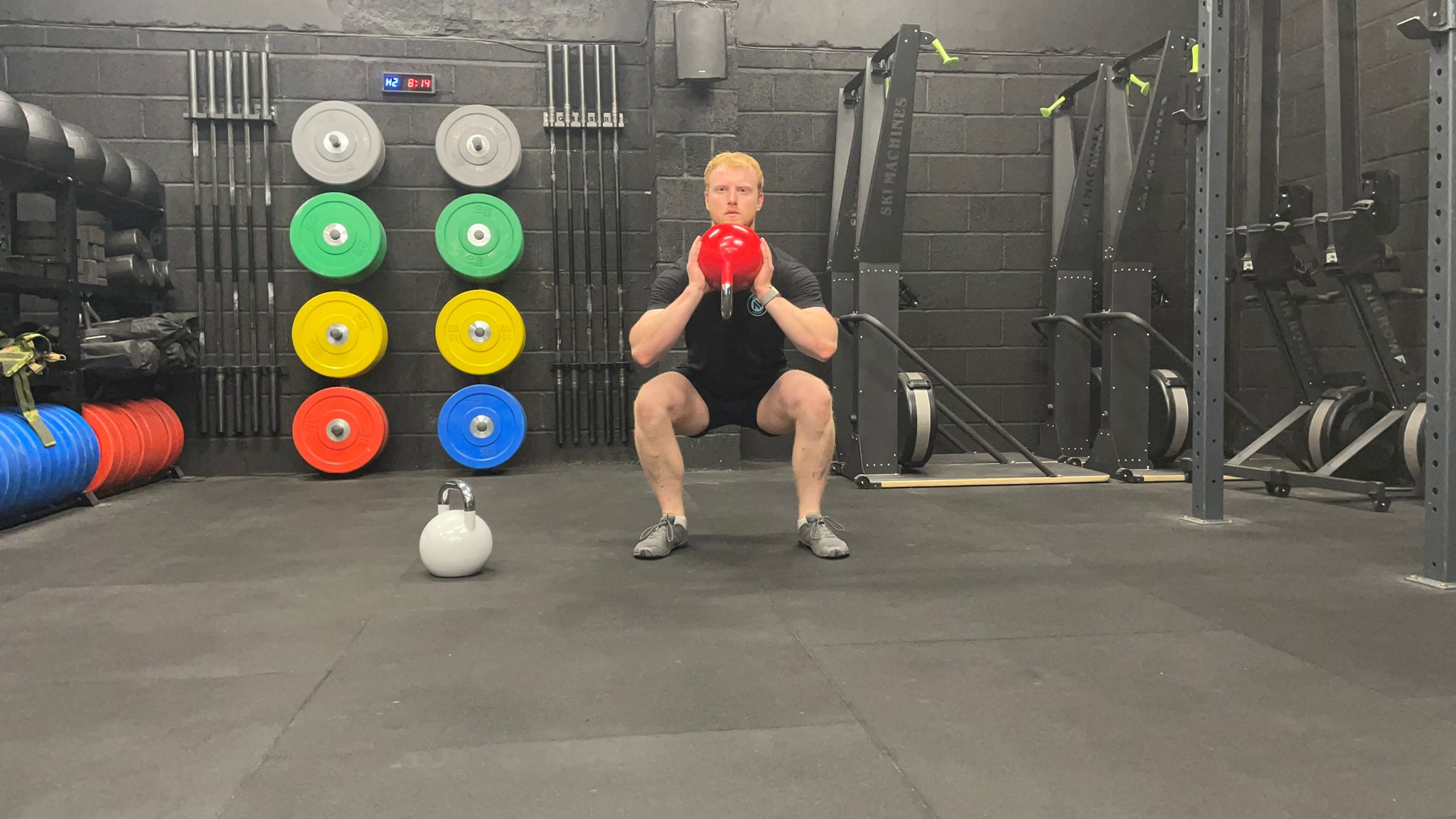
Sets: 2 Reps: 8
- Hold a kettlebell in both hands, tight to your chest.
- Keeping your chest up, push your hips back and bend your knees to squat as low as you comfortably can.
- Drive through your feet to straighten your legs and return to the starting position.
2. Single-arm overhead press
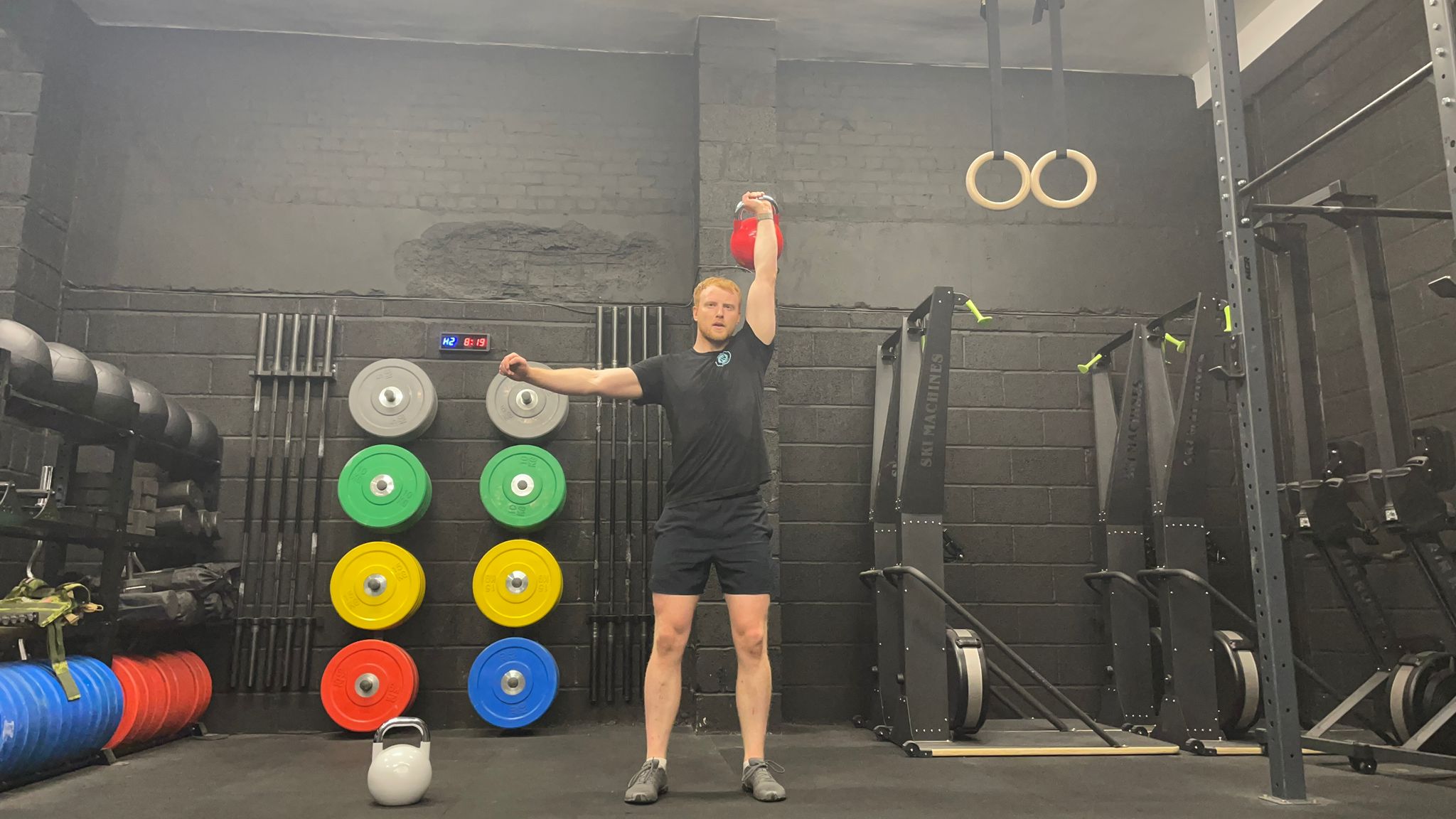
Sets: 2. Reps: 6 on each side.
- Stand with your feet shoulder-width apart, holding a kettlebell in your right hand at shoulder height.
- Drive your knuckles upward to extend your arm and press the kettlebell overhead. Your biceps should finish by your ear.
- Control the kettlebell back down to your shoulder to complete the rep.
- Complete the prescribed repetitions on your right side, then switch sides and repeat.
3. Overhead reverse lunge
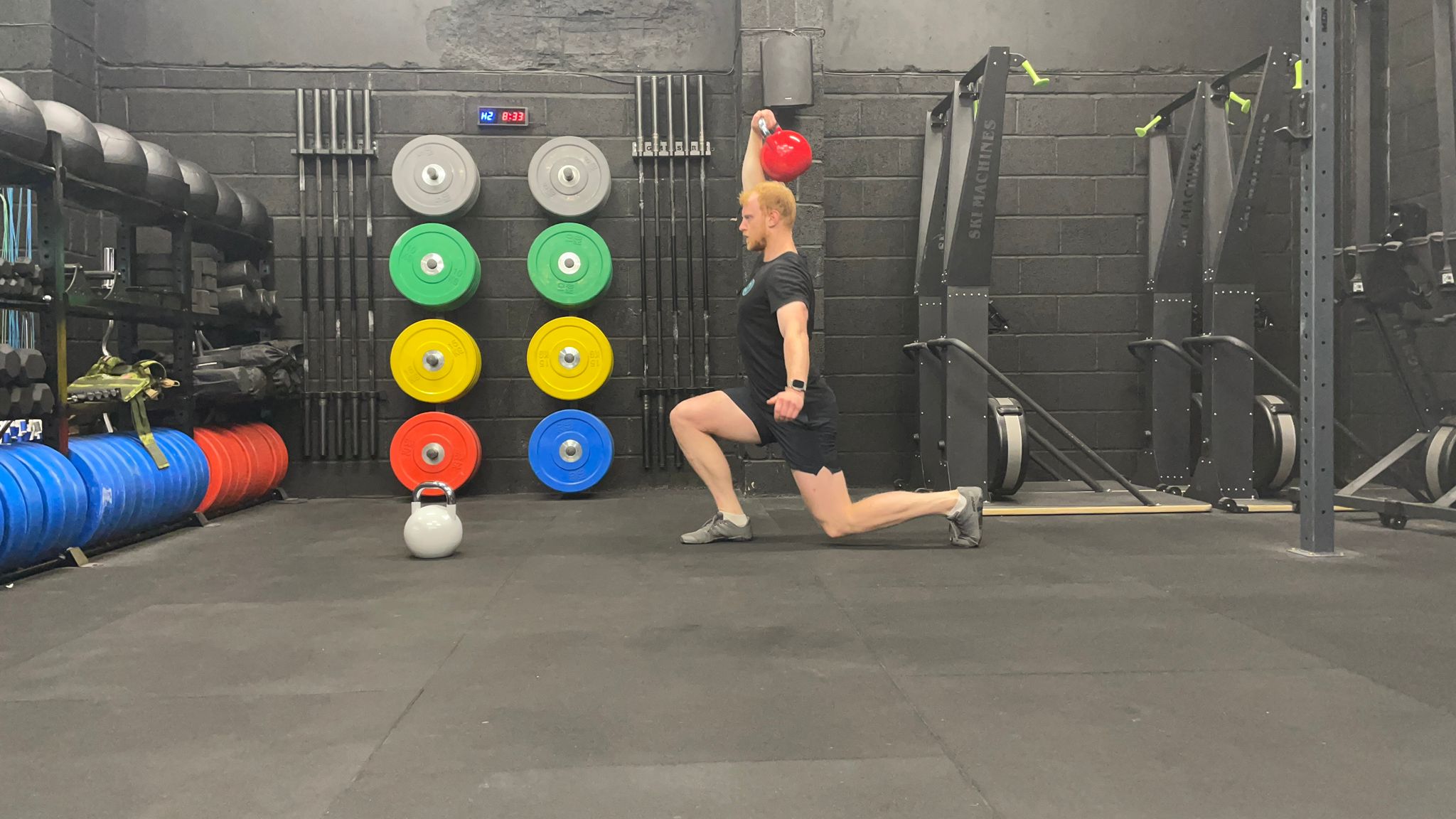
Sets: 2. Reps: 8 on each side.
- Hold a kettlebell overhead with your right hand, so your arm is extended vertically upwards and your right bicep is by your right ear.
- Step back with your left leg into a lunge, lowering your left knee until its just above the ground. Both legs should roughly form a right angle at this point.
- Drive through your right foot to return to the starting position.
- Complete the prescribed repetitions on one leg, then switch sides and repeat.
4. Kettlebell swing
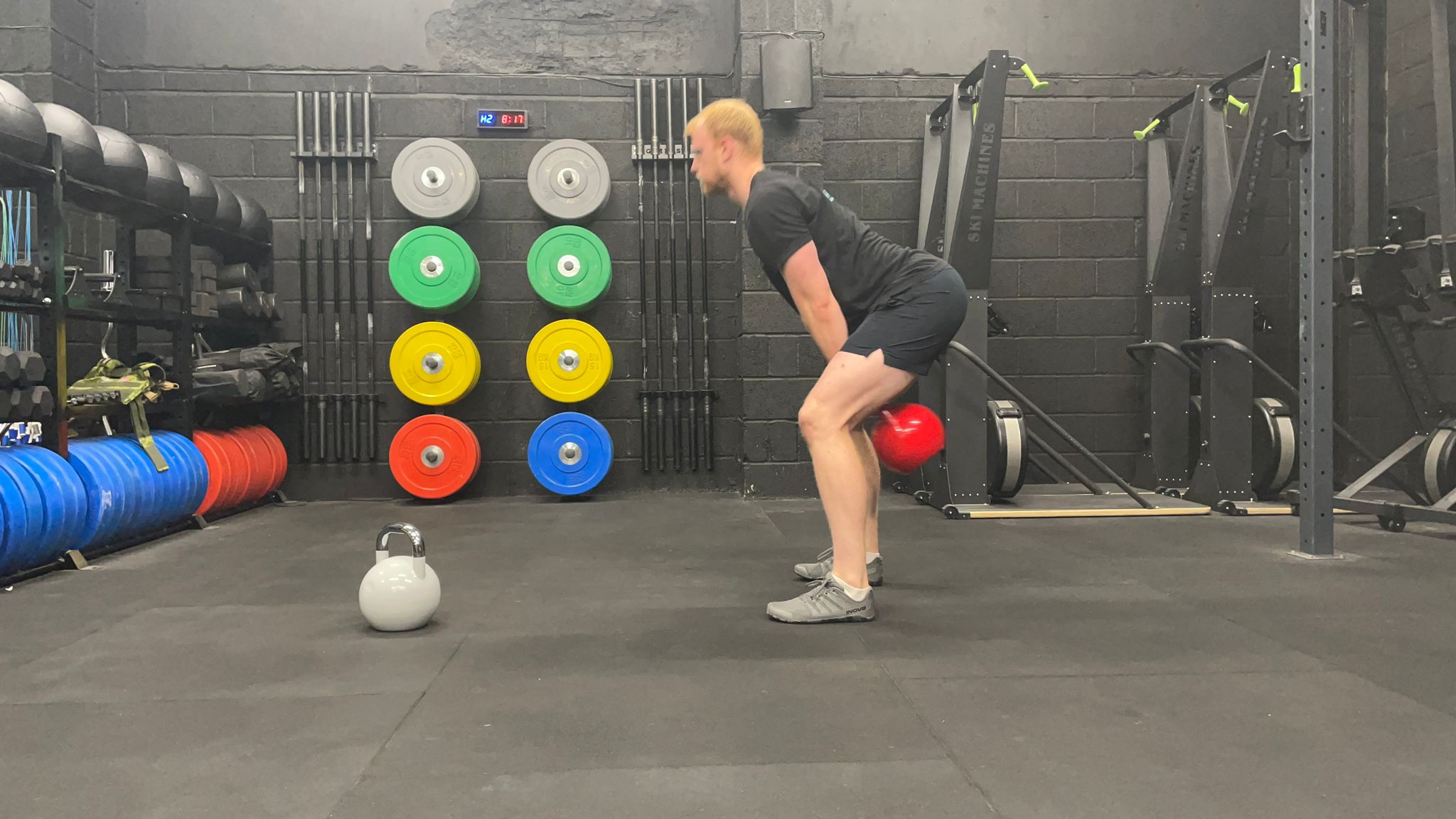
Sets: 2. Reps: 15.
- Assume a wide stance and hold a kettlebell both hands in front of your pelvis with an overhand grip.
- Soften your knees slightly and hinge at the hips, keeping your back flat, to allow the kettlebell to fall between your thighs.
- Keeping your arms straight throughout, drive your hips forward to propel the kettlebell up to eye-level in one fluid motion.
- Allow it to fall back down between your thighs, then repeat.
5. Kettlebell single-arm row
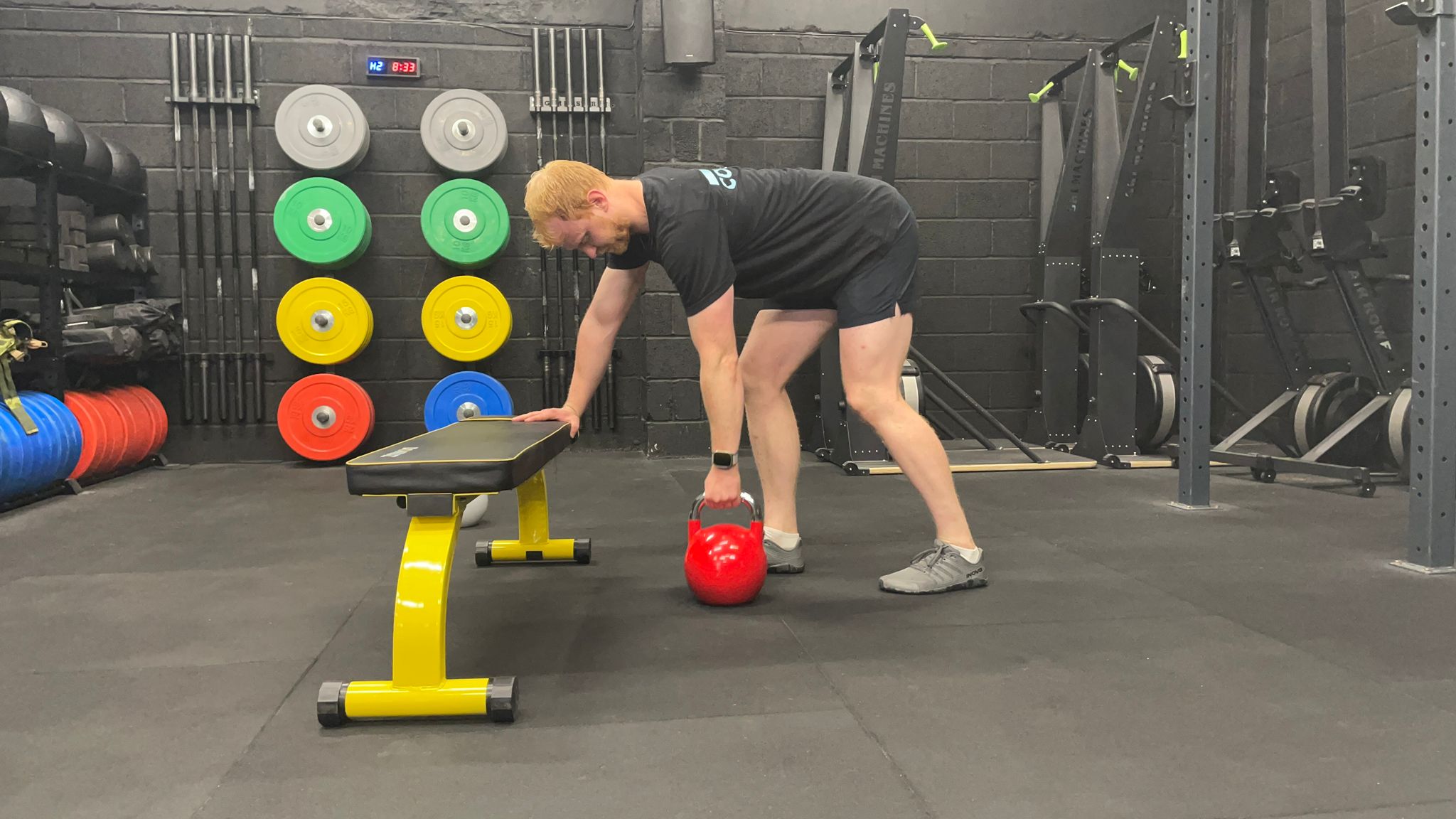
Sets: 2. Reps: 6 on each side.
- Assume a staggered stance with your right foot forward and hinge at the hips to bend over until your torso is almost parallel to the ground. Place your right hand on a sturdy knee-high surface in front of you for stability, such as a chair or weight bench.
- Hold a kettlebell in your left hand and allow your left arm to hang toward the floor.
- Drive your left elbow upward to row the kettlebell toward the bottom left of your ribcage, squeezing your shoulder blades together as it reaches the top of the movement.
- Control the kettlebell down to the starting position.
- Complete the prescribed repetitions on one arm, then switch sides and repeat.
6. Kettlebell single-arm floor press
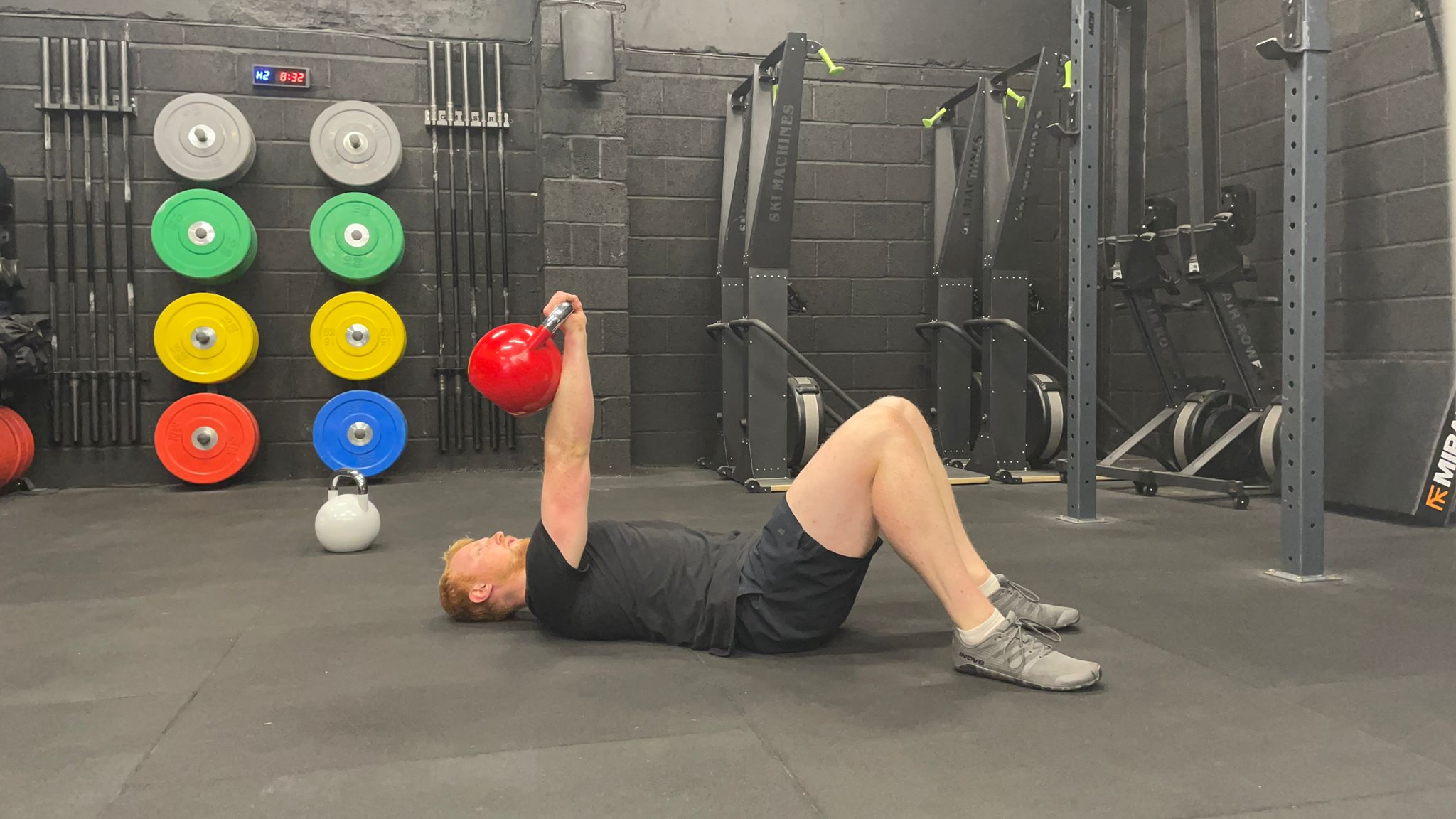
Sets: 2. Reps: 8 on each arm.
- Lie on your back on the ground.
- Hold a kettlebell in your right hand, with your arm extended vertically above your right shoulder. The head of the kettlebell should be resting against the top of your forearm.
- Control the kettlebell down to your chest, then drive your knuckles upward to return it to the starting position.
- Complete the prescribed repetitions on one arm, then switch sides and repeat.
7. Kettlebell biceps curl
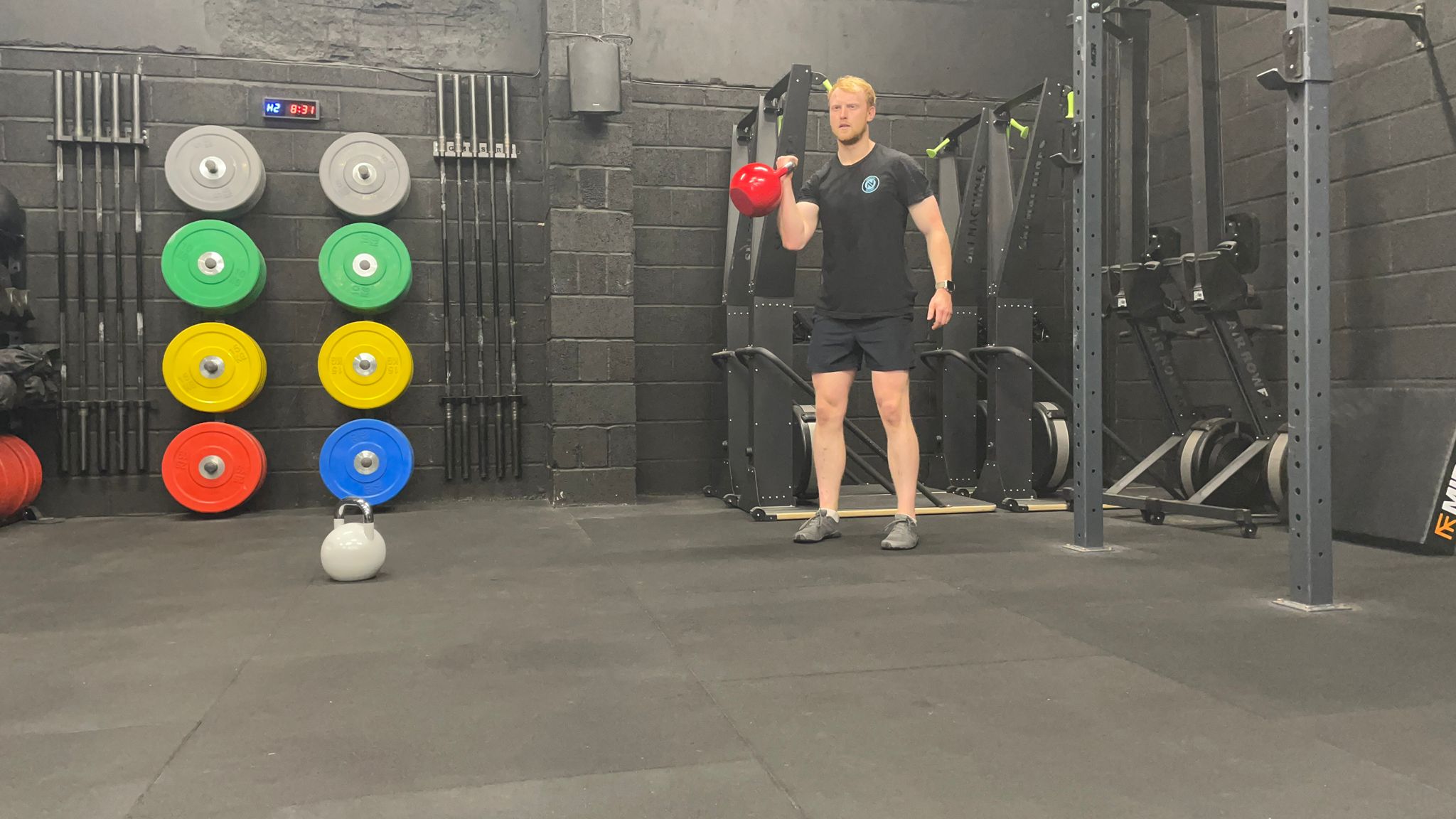
Sets: 2. Reps: 10 on each side.
- Stand with your feet shoulder-width apart and your arms by your side, holding a kettlebell in your right hand with your palm facing forwards.
- Curl the kettlebell towards your right shoulder, squeezing your biceps at the top.
- Control it back down to the starting position to complete the rep.
- Complete the prescribed repetitions on one arm, then switch sides and repeat.
What kettlebell weight should I choose?
You can do this workout with a single kettlebell. However, if you want maximum bang for your buck, Vincent recommends having a few different weights at your disposal.
“When choosing a kettlebell weight, consider the specific movement,” he says. “Heavier kettlebells are suitable for lower body exercises like squats or deadlifts, while lighter weights are better for upper body movements or those requiring more control. Ensure the weight is challenging but allows you to maintain proper form throughout the workout.”
This is because the lower body is home to larger muscle groups than the upper body, meaning you’ll need heavier weights to truly test them. And for muscles to grow and become stronger, they need to be challenged.
So, I would recommend aiming to have at least one heavier kettlebell and one lighter kettlebell in your arsenal for this routine.
What are the benefits of kettlebell training?
If you want to build muscle, dumbbells, barbells and resistance machines have long been the default option. But I think kettlebells are criminally overlooked, and Vincent does too.
“Kettlebells are small and easy to use at home or in small spaces,” he says. “And many kettlebell exercises copy how we move in real life, which helps with everyday activities. They strengthen your core, improving your balance and stability too.”
There’s a reason for this. Unlike a dumbbell, the center of mass in a kettlebell is away from the handle. So, when you perform dynamic exercises like swings, the weight pulls you in various directions and challenges your mid-body muscles to keep you stable.
The ergonomic handle is also well-suited to explosive movements like swings, snatches and cleans, helping you build power and athleticism alongside strength.
On top of this, they’re incredibly versatile.
“Kettlebell training has many benefits, making it a great choice for everyone,” Vincent concludes. “You can do a variety of exercises that work different muscles, allowing you to build strength, endurance and flexibility.”
You may also like...
- Stretching needs to be a crucial part of your life’ – flexibility expert recommends these three stretches to ‘hit the whole body’
- I've been walking 10,000 steps a day for a year – here are five unexpected benefits I've experienced
- I tried Chris Hemsworth’s Furiosa workout using just a couple of dumbbells, and it was more effective than I expected
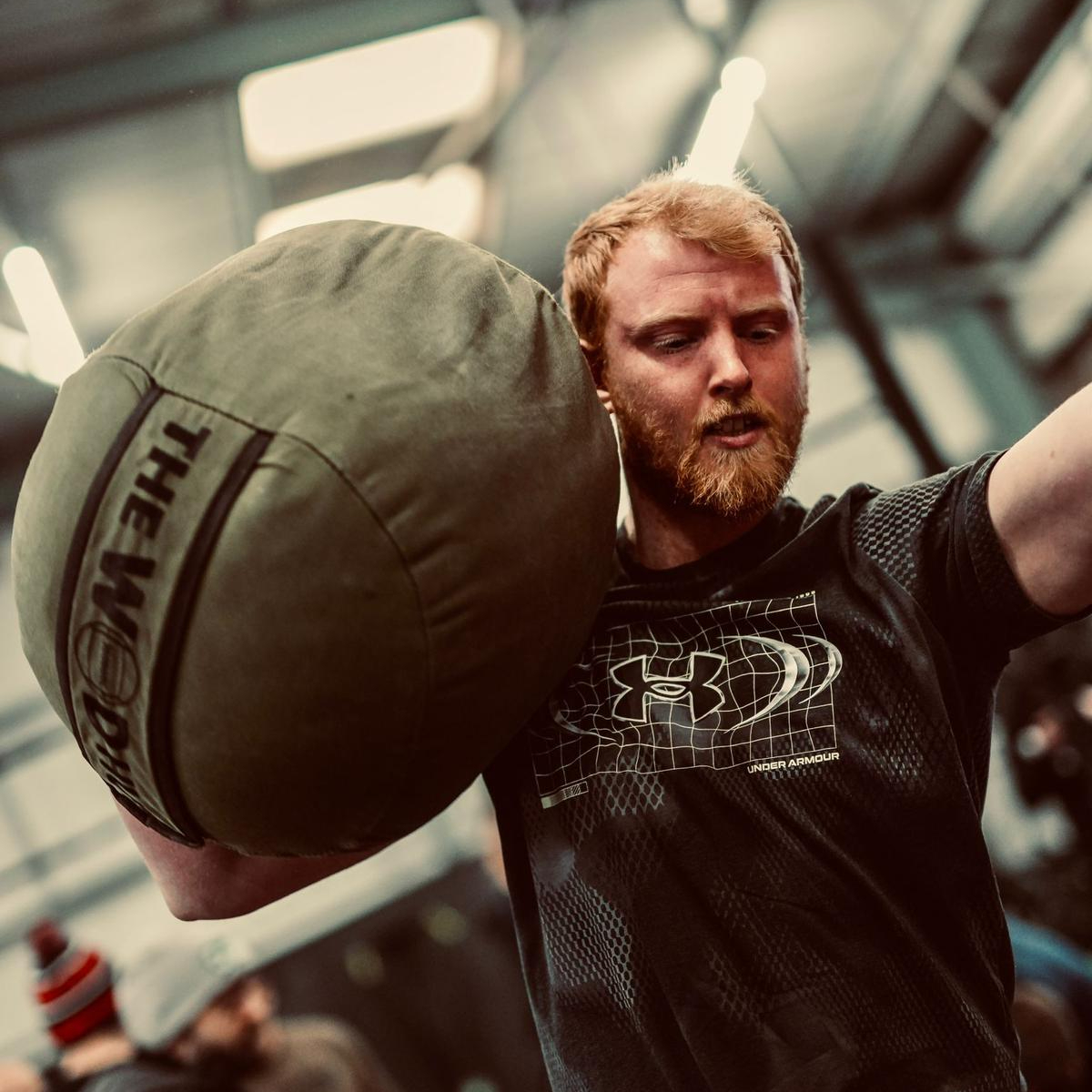
Harry is a huge fan of picking things up, putting them down again and writing about it, which uniquely qualifies him for the position of fitness and wearables writer with TechRadar.
He’s an NCTJ-qualified journalist with a degree in English and journalism and several years’ experience covering the health and fitness beat. This has involved writing for the likes of Men’s Health, Women’s Health, Runner’s World, Fit&Well, Live Science and Coach.
Harry is passionate about all things exercise-related, having spent more than a decade experimenting with a wide range of training styles. He's used strength training, bodybuilding, Pilates, powerlifting, gymnastics, rowing, yoga, running, calisthenics, CrossFit and more to build a fit, functional body (and have fun while doing it).
When he’s not writing or training, he can usually be found racing his dog Archie up scenic hills in the south west of England or working to complete his NASM-certified personal trainer qualification.